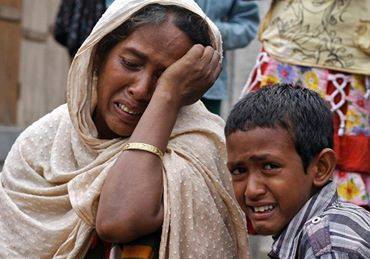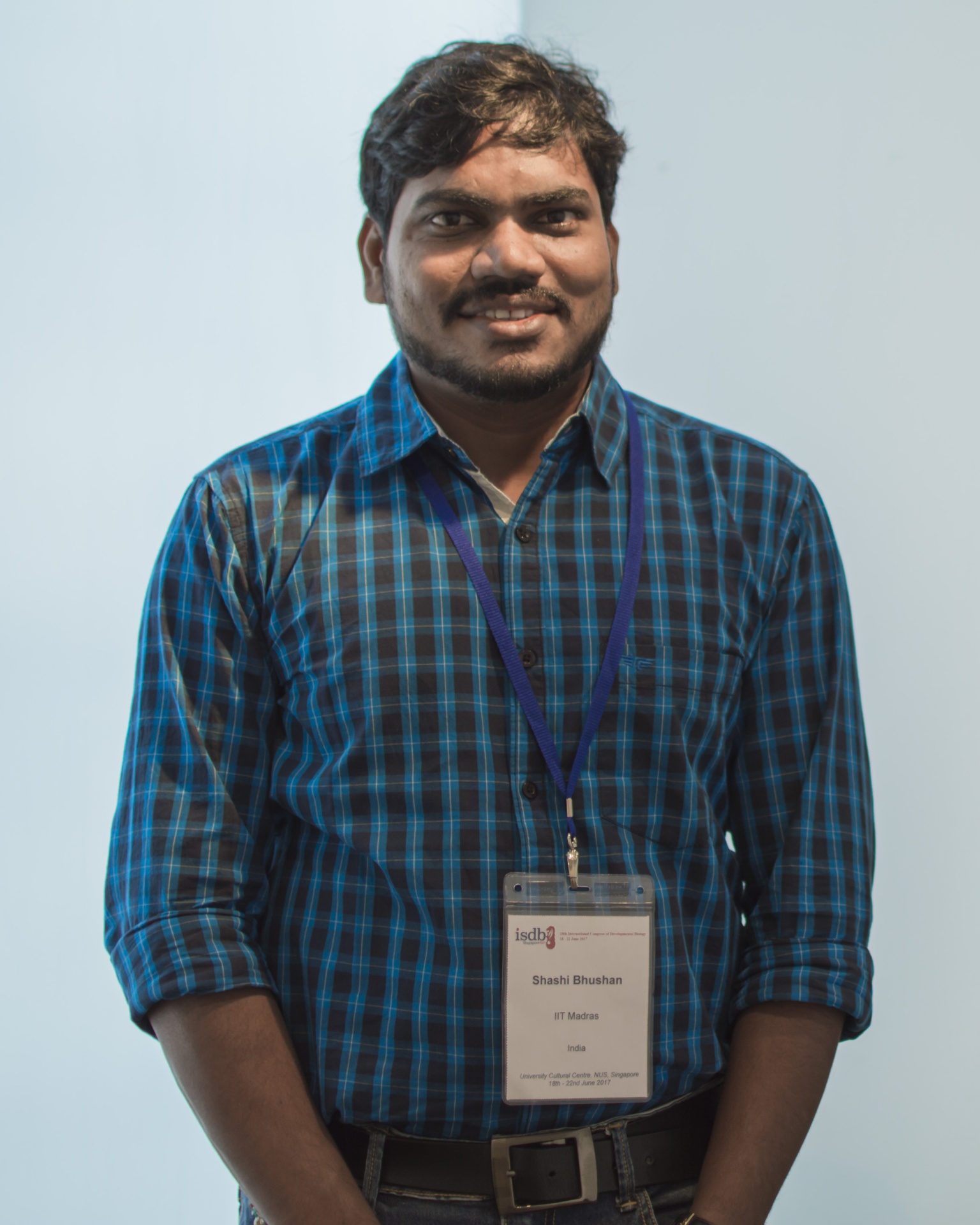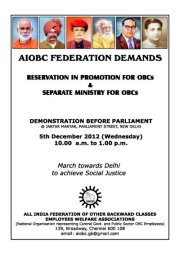Rafiul Alom Rahman
The election results are out. Narendra Modi is all set to be India’s next Prime Minister. TV and phone screens are flooded with congratulatory ads, messages. Acche din aane wale hain!
In Assam, the Bharatiya Janata Party (BJP) has won 7 seats. In BTAD, Naba alias Hira Saraniya, the non-Bodo consensus candidate from Sanmilita Janagosthiya Aikkyamancha (SJA) has won with a big margin, defeating the ruling Bodo People’s Front (BPF) candidate, Chandan Brahma.
People have given their mandate. The Congress has failed miserably. And rightly so.
Amid all this, I have not been able to forget the heart-wrenching image of four year old Farida Begum, who was shot dead in cold-blood in the Bodo Territorial District (BTAD) of Assam in the latest round of state-sponsored ‘ethnic cleansing’. Most of the victims of the Bodoland massacre have been women and children.

In the midst of several images of hapless women, men and children – shot dead or mourning the death of relatives – there she was, little Farida Begum, gunned down before she could even grow up to know her crime – the crime of being a Bengali-speaking Muslim in Assam.
At a time when raising the bogey of ”illegal Bangladeshi immigrants” can help score easy political points in Assam and when the very word ”Bangladeshi” can render so many lives insignificant, unwanted, I am reminded of this extremely powerful, poignant line by Assamese singer and musician, Zubeen Garg:
Tumaru ji xopun, amaaru xei xopun, xopunore siluwa udor
(We are governed by the same dreams; the same hunger weaves through us)
This line is strikingly similar to Runa Laila’s
Eki aasha, bhaalobaasha, kaanna-haashir eki bhaasha
(We share the same hope, the same love, and the same language of tears and happiness)
About 45 people were killed in BTAD as per official reports, 10 persons go missing and nearly 70 out of the 72 houses in Narayanguri, Baksa were burnt down. Those who took to River Beki to save themselves were either hit by bullets or had their children being wrenched away by the currents of the river. A fact-finding team led by Seema Mustafa of the Centre for Policy Analysis (CPA) and social worker and writer, Harsh Mander, has recorded the statements made by survivors and eyewitnesses. They have recommended that the statements of survivors be recorded by magistrates under Section 164 Cr Pc and children’s statements be recorded in the camp itself by specially trained magistrates. They have also asked for urgent, special, intensive psycho-social care for the children.
Mitra Phukan, a well-acclaimed writer from the state, raises the much-needed voice – ”the balm for Assam” – in a climate of violence and polarity. In an article for a local webzine, she writes:
”Dissent was never looked at kindly in our society, from the days of the Assam Agitation, onwards. The binary of “Either you agree with what we are saying or else you are a traitor to Assam” is very much in force, even today”.
Phukan believes there is much more to the conflict than presence of ”so-called Bangladeshi infiltrators out to grab land” in western Assam. She writes:
”This is an area that has suffered much during and after partition, though it has largely been ignored by documented partition history and even partition stories. To set out the terms of the current conflict in the tired rhetoric of ”illegal immigrants”, therefore, is to ignore the many other important strands in historical, social, cultural, political, linguistic and religious fabric of the land. Certainly, illegal immigration is one strand. But to overlook the others will be to ignore the current realities that make up the overall fabric of the region.”
While the Assam government and the BTAD administration have put the onus of the massacre on the Songbijit faction of National Democratic Front of Bodoland (NDFB), survivors and those affected by the violence have refuted the claim of the government. They have asserted that former cadres of Bodo Liberation Tigers (BLT) were involved in the carnage. According to the report brought out by the Centre for Policy Analysis (CPA), survivors have even recognized and named surrendered militants who had been appointed as Forest Guards in BTAD. The fact that guns provided to forest officials have been used in the massacre also directs suspicion towards Khampa Borgoyary, Deputy Chief of BTC and executive member of the Forest Department of BTAD.
Many victims and conscious citizens in BTAD feel that the massacre was a planned reprisal to teach non-Bodo inhabitants a lesson for voting against the atrocious ruling administration.
The immediate provocation for the 2nd May killings came from the communal statement made by Bodo People’s Front (BPF) legislator and former Agricultural Minister of Assam, Pramila Rani Brahma, who accused Muslims of not voting for the BPF candidate, Chandan Brahma. This was preceded by a brutal police crackdown on innocent Muslim villagers on 25th April, 2014, following poll violence at the Harbhanga polling station the previous day. A report brought out by the Centre for Social Justice (CJS) mentions that the police not only assaulted Muslim villagers, but also raped women and set hundreds of houses on fire. People were reluctant to file FIR fearing police retaliation, but later did so on insistence of local activists.
The Bodo movement for a separate homeland started in the 1980s. The fight for Bodoland which was accompanied by a large degree of violence resulted finally in the Bodo Accord of 2003 for the creation of the Bodoland Territorial Council (BTC). The BTC accord was signed by the NDA government in the centre, the state government of Assam and Bodo Liberation Tigers (BLT). Under the Sixth Schedule of the Indian Constitution, the BTAD was formed.
In his essay titled ‘Protective Discrimination and Crisis of Citizenship in North-East India’ (published in Economic and Political Weekly, July 26, 2003), Sanjib Baruah has observed that in post-colonial India the Sixth Schedule is being extended to far less isolated tribal groups, and that too after economic and demographic changes of more than half a century of independence. Baruah comments on the ”lack of historical memory” on part of Indian policy-makers who have extended the elements of Sixth Schedule to areas where the demographic picture is far more mixed. In the same article, he says,
”The Sixth schedule was intended to apply only to those scheduled tribes that were considered to be relatively concentrated in the ‘excluded’ and ‘partially excluded’ areas of the colonial era. The subcommittee of the Indian Constituent Assembly in charge of what was then called the ‘Tribal Areas of Assam’ (the Bordoloi subcommittee) did not consider the situation of STs such as Bodos, Misings and Tiwas who were not considered indigenous to ‘excluded’ and ‘partially excluded’ areas.”
Though Bodos have reserved 75% of the seats in the Territorial Council, the non-Bodos, who comprise of the Santhals, the Koch-Rajbongshis, the Bengali Muslims, the Nepalis, etc. outnumber them. The non-Bodos are also unwilling to give up their lands or accept the political supremacy of the Bodos. This has resulted in recurring violence between the Bodos and non-Bodo communities. This is further compounded by a sense of land alienation among Bodo tribals, insurgency and regular instances of extortion, kidnapping, affecting all communities.
There was a significant shift in the political spectrum this time with non-Bodos voting en masse for Naba Saraniya, a former commander of United Liberation Front of Assam (ULFA) and the non-Bodo consensus candidate of Sanmilita Janagosthiya Aikkyamancha (SJA), a conglomerate of at least 20 ethnic and linguistic groups in BTAD areas. This dealt a serious blow to the ruling Bodo People’s Front (BPF) whose votes were already split between two other Bodo candidates – RS Mooshahary, former Governor of Meghalaya and the Trinamool Congress contestant and an independent candidate, Urkhao Gwra Brahma.
Student leadership like the All Bodo Students Union (ABSU) has staged peaceful ‘dharnas’ and protests, both in Guwahati and Kokrajhar, condemning the violence and demanding justice for the victims. Urkhao Gwra Brahma has rubbished the anti-immigrant rhetoric and held insurgency and the vested interests of the ruling class responsible for the conflict.
While the genuine aspirations of the Bodo community seem to have been hijacked by the ruling elite, a section of the media and Assamese society has been constantly playing up the bogey of ”illegal Bangladeshi immigrants”. The blatant hypocrisy of the Assamese media in its portrayal of Bengali-speaking Muslims has been quite evident in the past as well. During the Assam riots of July, 2012, the mainstream media almost justified the carnage as that of ”Bangladeshis”. The blame game started again with the regional media trying to find culprits in the minority community and Asomiya jingoists asking for deportation of the victims.
The Congress government in the state has repeatedly failed to take control of the situation. From the Nellie Massacre of 1983 to several other killings in 1993 (of Bengali Muslims), in 1996 (of Santhals, Adivasis) to the Assam Riots of July, 2012, there has been a history of impunity and ease with which the state has dealt with such violence. Victims in Bodoland or elsewhere haven’t received adequate compensation or justice, nor has there ever been a sense of closure. People continue living in relief camps in the most deplorable conditions. The Chief Minister’s idea of arming non-Bodos goes against the very discourse of peace and justice in the region.
Tarun Gogoi’s government could never take an affirmative position on Bengali-speaking Muslims in Assam. It has failed to address grievous issues concerning Bengali Muslims like river erosion-induced displacement and ‘D’ (doubtful) voters. The Assam State Water Resources Department reveals that the average annual damage since 1954 has been over Rs. 124 crore, the estimated average annual erosion rate has been 8,000 hectares, which has affected more than 90,700 families spread over 2,534 villages.
In Assam, Bengali speaking Muslims have been the perennial ‘others’. Torn between poverty, illiteracy and displacement, and often locked in conflict with a hegemonic culture that refuses to understand, to accept those who do not speak/appear Asomiya, they remain an easy target for the media that is constantly in search of the ‘outsider’. The All Assam Students Union (AASU) that is showing its concern for the BTAD killings today should realize it is the kind of exclusionary politics and linguistic chauvinism they have practiced over the years that laid the very foundation of the violence today. It goes back to the days of Assam Agitation. Unless the ghosts of the past are acknowledged, the spiral of violence will continue.
With the BJP’s massive victory in the Lok Sabha elections and the ascent of a leader who has always been looked at with fear and suspicion, it will be interesting to see the new government’s position on Bengali Muslims in Assam. There is much to be done for the community than simply brushing them off as ”Bangladeshis”. BJP has the opportunity to fill up the void left by an inefficient Congress government.
(A version of this article appeared on FIRSTPOST)
~~~
Rafiul Alom Rahman is a student activist in Delhi University. He can be reached at rafiul.delhi@gmail.com.









